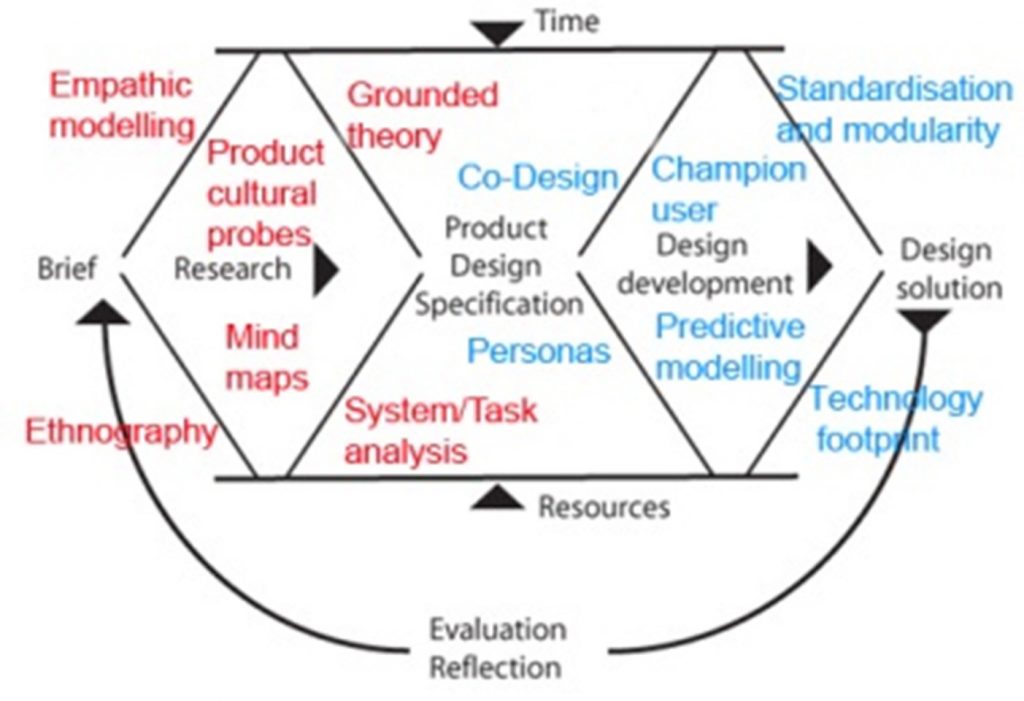The methods and tools used in this activity have a natural grouping that collect information to inform decision-making (red) and those which help make design-decisions (blue). The method may be considered to fit within the category of a mixed methods approach as defined by Creswell (Creswell 2006, Creswell and Plano-Clark 2009).
The starting point for any new product development is defining the need and characterising the market the range of individuals within it. Organisations such as National statistics offices (National Statistics Office 2015) the World Health Organisation (WHO 2015) hold useful data relating to the numbers of people with impairment or who may be considered disabled. Once a market size has been established the choice of methods of manufacture may be narrowed.
Useful links
Creswell, J.W., 2009. Research design: Qualitative, quantitative, and mixed methods approaches. 3rd ed. Sage, London.
Creswell, J.W. and Plano-Clark, V.L., 2006. Designing and conducting mixed methods research. Sage, London.
National Statistics Office. 2015. National Statistics Office (Available from: http://www.neighbourhood.statistics.gov.uk/HTMLDocs/dvc235/index.html), Accessed: [23/09/2015]
Torrens, GE (2011) Universal Design: empathy and affinity. In Karwowski, W, Soares, M, M, Stanton, A, N, Eds, (ed) Handbook of Human Factors and Ergonomics in Consumer Products, CRC Press, pp.233-248 Available at: (http://www.crcnetbase.com/doi/abs/10.1201/b10950-19), Accessed: [23/09/015]
Torrens, G.E., 2012. Assistive Technology product to Universal design: A way forward, Design For All India, 7 (7), pp.182-205 Available at: (https://dspace.lboro.ac.uk/dspace-jspui/handle/2134/15736), Accessed:[23/09/2015]
Torrens, GE and Black, K (2011) Equipment design in inclusive physical activity and disability sport. In Riobas, AC, Stamatakis, E, Black, K (ed) Design for Sport, Gower, pp.153-178, Available at: (https://dspace.lboro.ac.uk/dspace-jspui/handle/2134/9025), Accessed: [21/01/2021]
World Health Organisation, 2012. WHO, (available from: www.who.int/en). Accessed:[23/09/2015]

